At the time of Italy’s entry into World War Two, she possessed a modern and – on paper at least – highly effective fleet. Four battleships and eight heavy cruisers were available, with three more battleships being fitting out. However, there were no aircraft carriers, not least because the Regia Marina was intended to operate near to friendly air bases in Italy and Africa.
As might be expected from a force operating among the islands of the Mediterranean, light forces were quite numerous, including 14 light cruisers, 128 destroyers and 62 motor torpedo boats, which was a weapon favoured by the Italians and well suited to local conditions. No less than 115 submarines were available. The main Italian naval base was at Taranto, home of the battleship force. Lighter groups were based out of ports on the Italian mainland, Sicily and the Red Sea.
The Regia Marina failed to achieve much more during the course of the war, eventually surrendering to the Allies at Malta. Its personnel fought against their former allies towards the end of the war, losing a little over 4,000 men against Germany as opposed to just under 25,000 against the Allies.
It is interesting to speculate what the Regia Marina could have achieved had it been better led or handled. Italian enthusiasm for the war was noticeably lacking, and this led to lacklustre performances in the air, on the ground and at sea. The resulting reputation for lack of nerve is not deserved – Italian troops and ships at times fought bravely, especially for a commander or a cause they believed in – and in other wars of recent history there was nothing wrong with Italian courage or fighting ability.
It seems likely that, had the personnel of the Regia Marina really believed in their cause, their excellent battleships and cruisers might have covered themselves with glory. As Napoleon remarked: Morale is to the Physical as three to one.
Aquila-class Carrier – Aquila
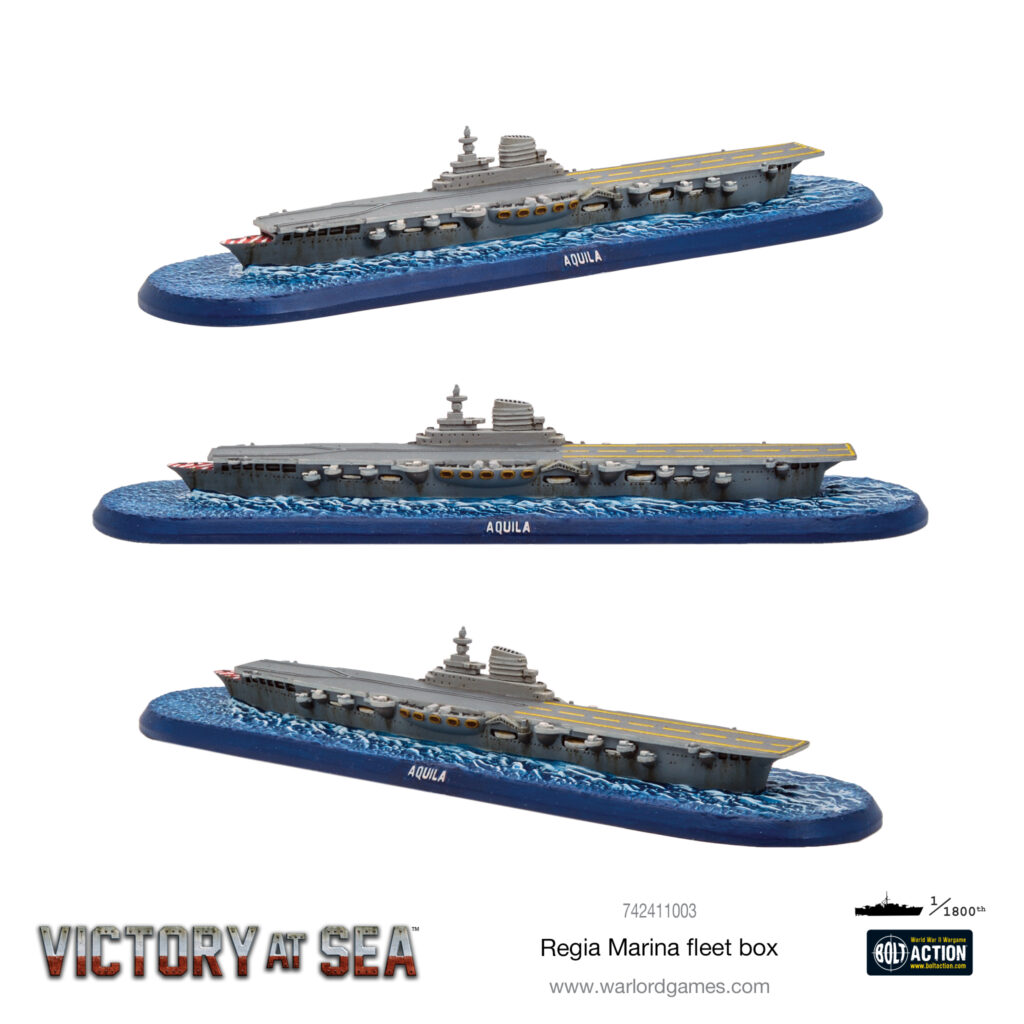
The role of aircraft carriers was undervalued by the Regia Marina, as the navy was expected to operate in the Mediterranean, close to Italian air bases. This attitude was best expressed by Mussolini who said, “Italy itself is an aircraft carrier laid over the Mediterranean.” Accordingly, the fleet air coverage was the responsibility of the Regia Aeronautica. The Regia Marina would request, on a case-by-case basis, air coverage to Regia Aeronautica, which would fulfil these requests if aircraft were available. Unsurprisingly, this arrangement often left the fleet without air cover, or with the aircraft arriving too late, or, worse, the aircraft mistakenly attacking Italian ships (as during the battle of Calabria). When the necessity for an air component travelling with the fleet was clear, it was decided to convert the ocean liner Roma into an aircraft carrier.
As there was already a battleship under construction named Roma, the new carrier was renamed Aquila. She was nearly complete at the time of the armistice in September 1943, after which she was seized by Germany. Before anything could be done with her, the Aquila was damaged by a series of Allied air attacks and soon after she was partially scuttled by Italian frogmen.
Conte di Cavour-class Battleship – Conte di Cavour 1940
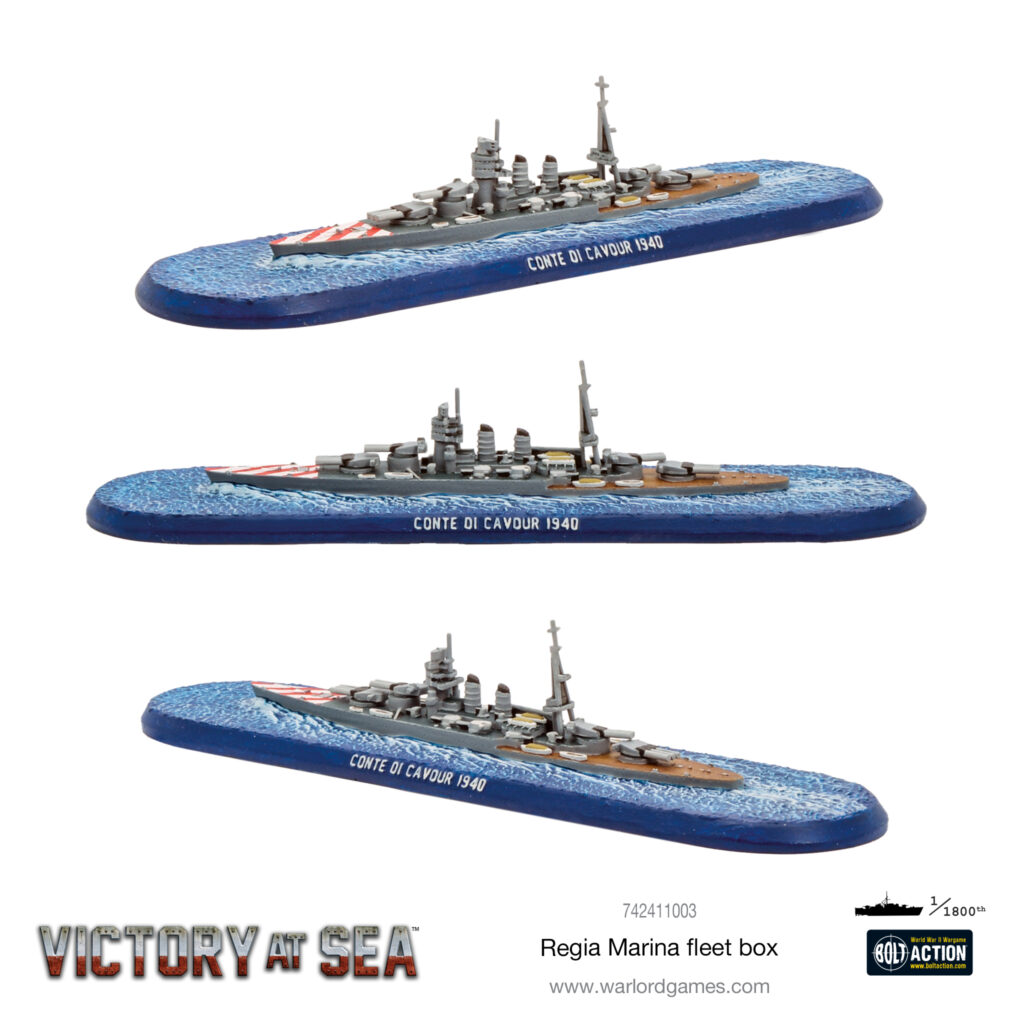
Originally commissioned in 1915, Conte di Cavour (and sister ship Giulio Cesare) were rebuilt as first-generation fast battleships in a process that left only 40% of the original structure in place. The central tower was removed, as was one main battery turret. The remaining guns were upgraded from 12-inch to 12.6-inch. The new boilers and turbines improved speed from 21.5 knots to 28 knots. Overall, they were good units, even with weak anti-aircraft and submarine protections.
Both ships participated in the Battle of Calabria in July 1940. Conte di Cavour was badly damaged when British torpedo bombers attacked the fleet at Taranto in November 1940. Her crew deliberately ran her aground, though most of her hull remained underwater. Her salvage and repair was a low priority and repairs were not completed prior to the Italian armistice in September 1943. Though the ship was then captured by the Germans, they did not continue repairs and the ship was damaged and capsized in an Allied air raid in 1945.
Etna-class cruiser – Etna 1942
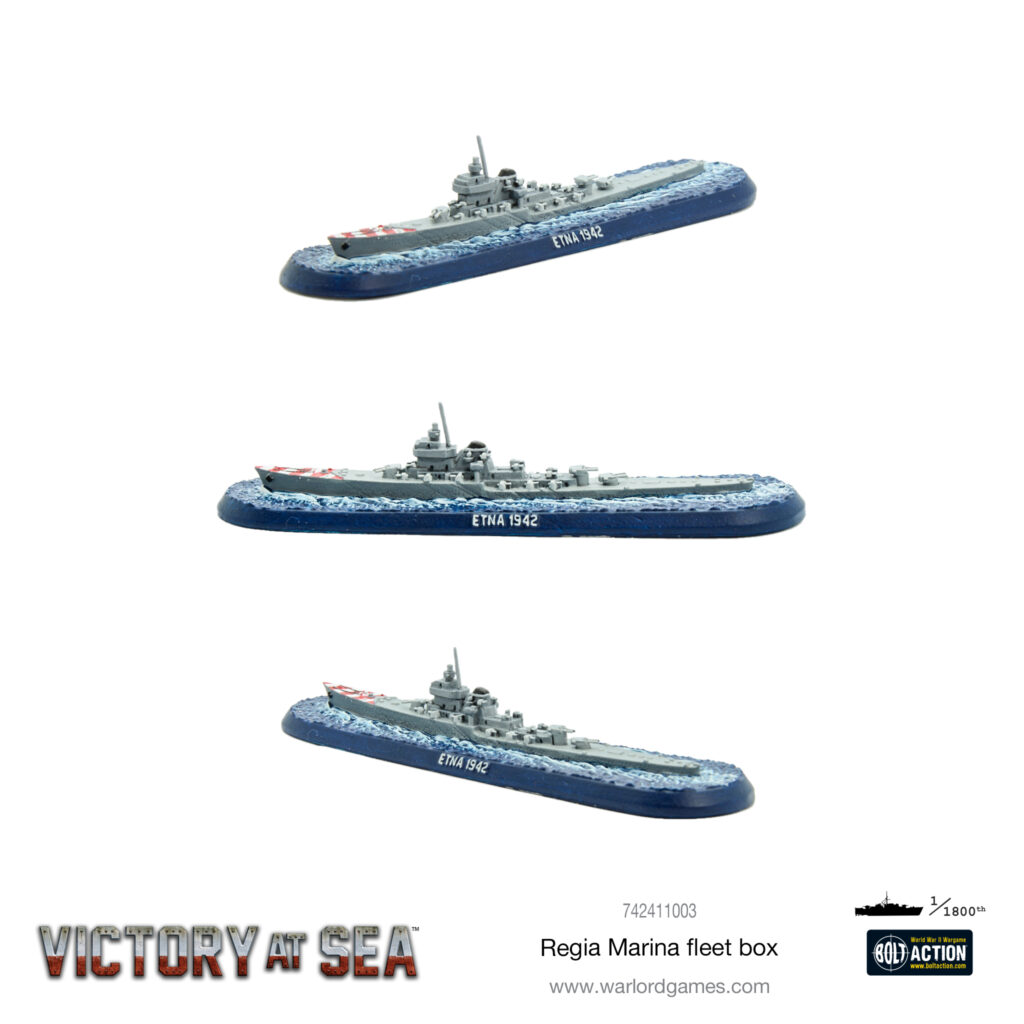
In 1939, Siam (now Thailand) placed on order for a pair of general-purpose light cruisers which were to be built in Italian yards. These hulls were subsequently taken over by Italy in 1942, with plans to complete them as anti-aircraft cruisers which also could also serve as flagships. Designated the Etna-class, the two ships were to be equipped with six 152mm guns in three updated dual-purpose twin mounts. In addition, ten of the equally new 65mm heavy anti-aircraft guns currently being designed for the Capitani Romani-class of light cruisers would also be carried, backed by a large number of lighter anti-aircraft guns. Both ships were still under construction when they were captured by German troops after the surrender of Italy in 1943. To prevent their use by the Germans, the ship was sunk by the retreating Italians.
Zara-class cruiser – Pola 1940
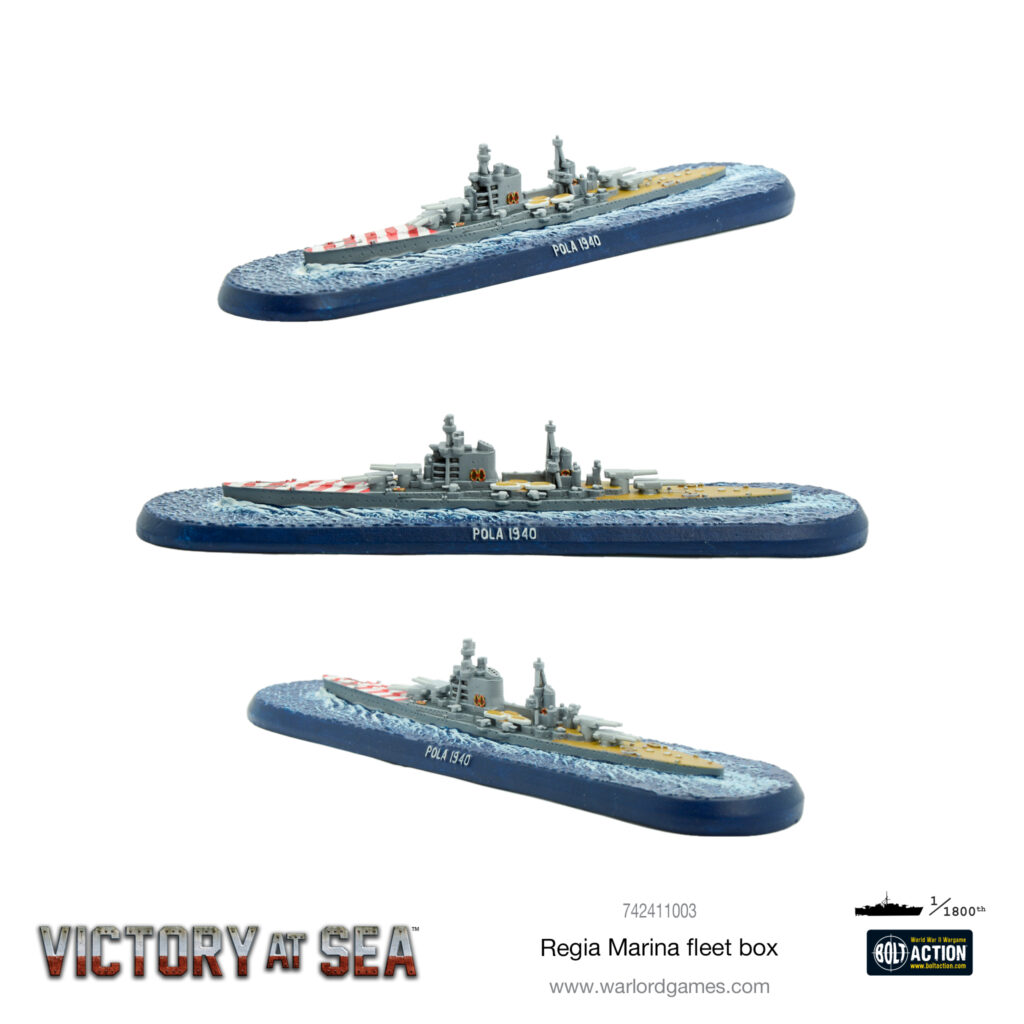
The Zara-class heavy cruisers were designed to have improved protection over the Trento-class, at the cost of speed. Originally designated light, then armoured, the Zara-class was properly rated as heavy cruisers. They were intended to remain within the 10,000-ton limits of the Washington treaty but eventually crept up by more than 10% of that limit.
Pola was initially the flagship of the second squadron, leading it in 1940 in the battles of Calabria and Cape Spartivento. Thereafter she was reassigned to the third squadron, along with her three sister ships. In the Battle of Cape Matapan in late March 1941, she was disabled by British airstrike and shortly thereafter was sunk in a night engagement with the British Mediterranean Fleet alongside Zara, Flume and two Regia Marina destroyers.
Luigi Cadorna-class cruiser – Luigi Cadorna 1940
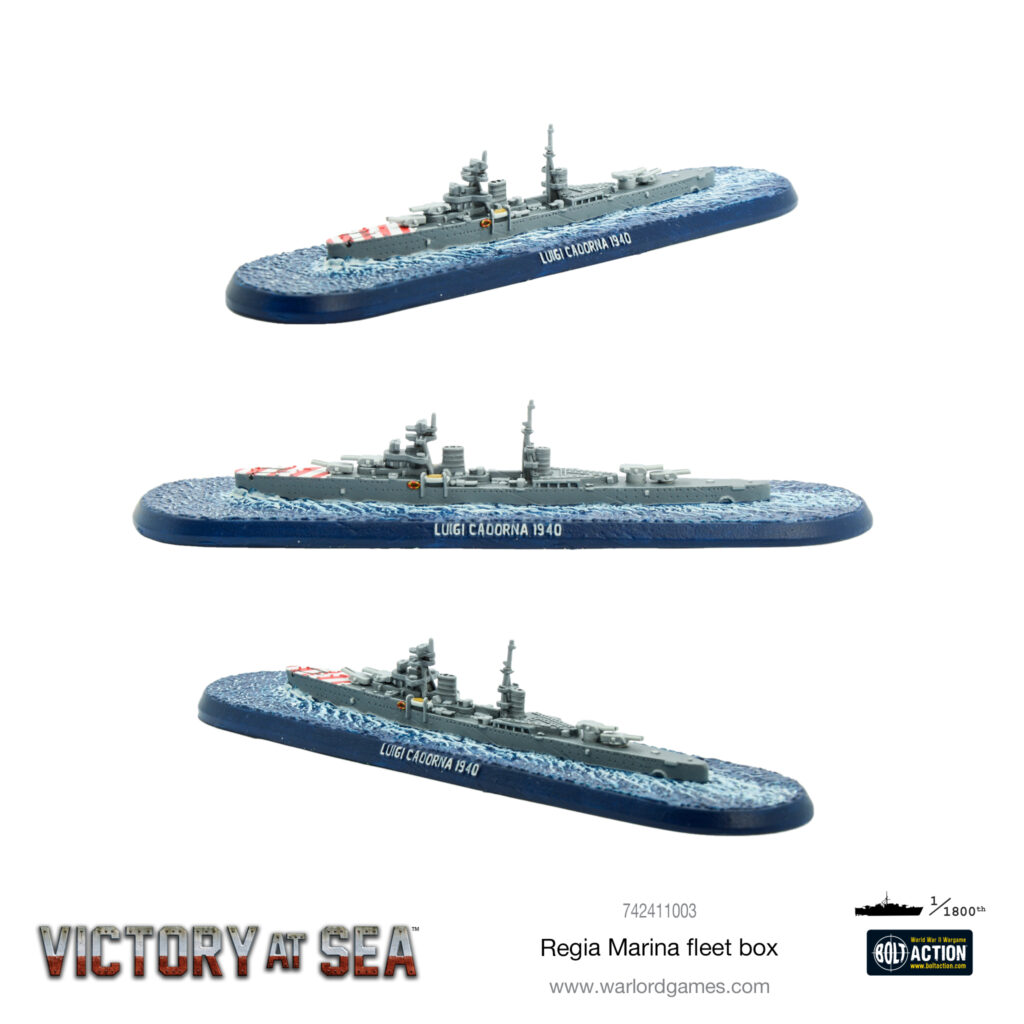
A sub-class of the Condottieri-class and ordered by the Regia Marina as a follow on to the Giussano-class, the two ships of the Luigi Cadorna-class had similar characteristics but were intended to have improved protection and stability. However, protection ended up being virtually the same, but stability and hull strength were improved. Otherwise, these ships showed no improvement in fighting power over the earlier Giussano-class. A late war refit would see the removal of the catapult and two aircraft originally carried for additional light anti-aircraft weapons.
The lead ship of the class, Luigi Cadorna took part in the Battle of Calabria in July 1940, but was shortly thereafter placed into reserve owing to her relatively weak design. She re-entered service however when the need for the supply of the Axis armies present in North Africa became paramount. Over the next few months, she operated as a convoy escort, as a transport, sortied to intercept British convoys and performed minelaying operations outside Taranto. At the armistice, on 8th September 1943, she was still at Taranto but sailed to Malta the next day to surrender alongside the rest of the fleet. For the remainder of the war, she operated as an Allied transport ship.
Regia Marina Fleet
In addition to the vessels above, the Regia Marina fleet box contains three Navigatori-class Destroyers and four Reggiane RE.2001 Falco II aircraft flights.
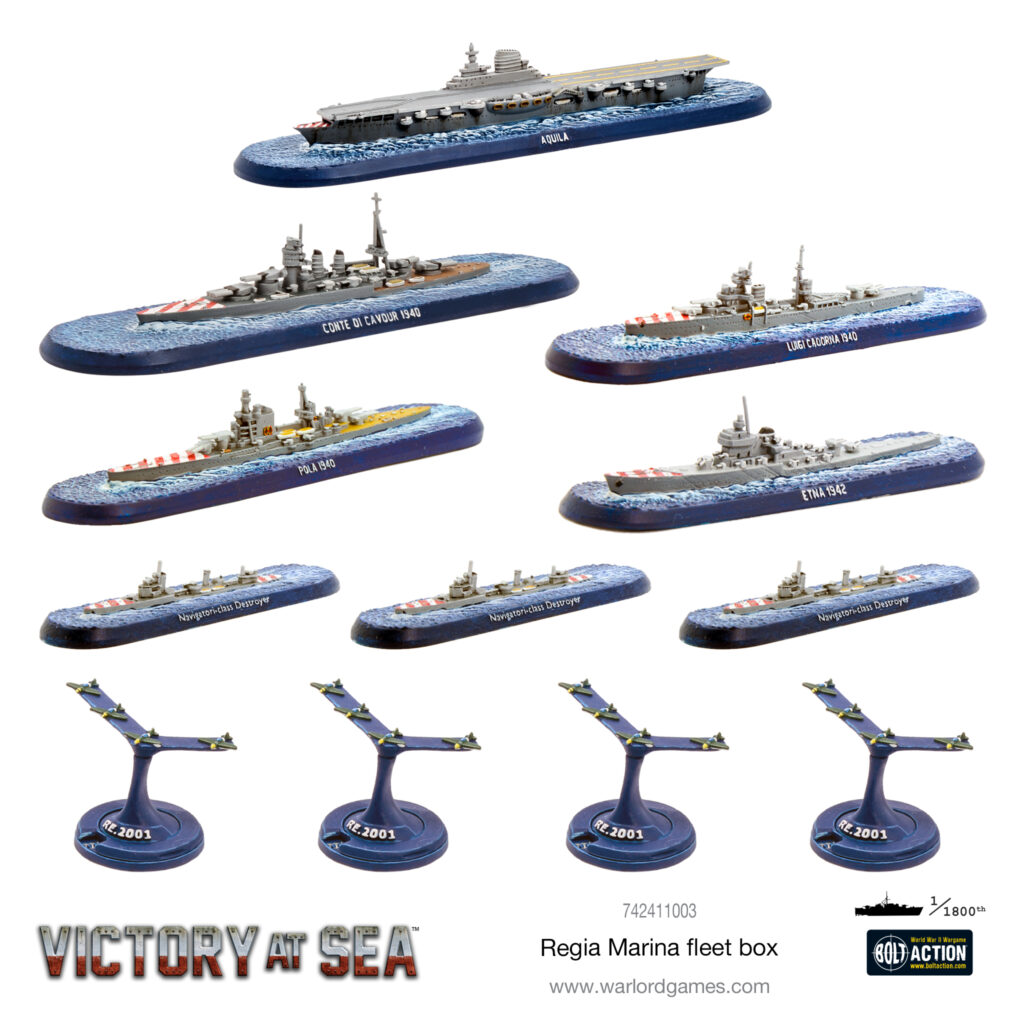
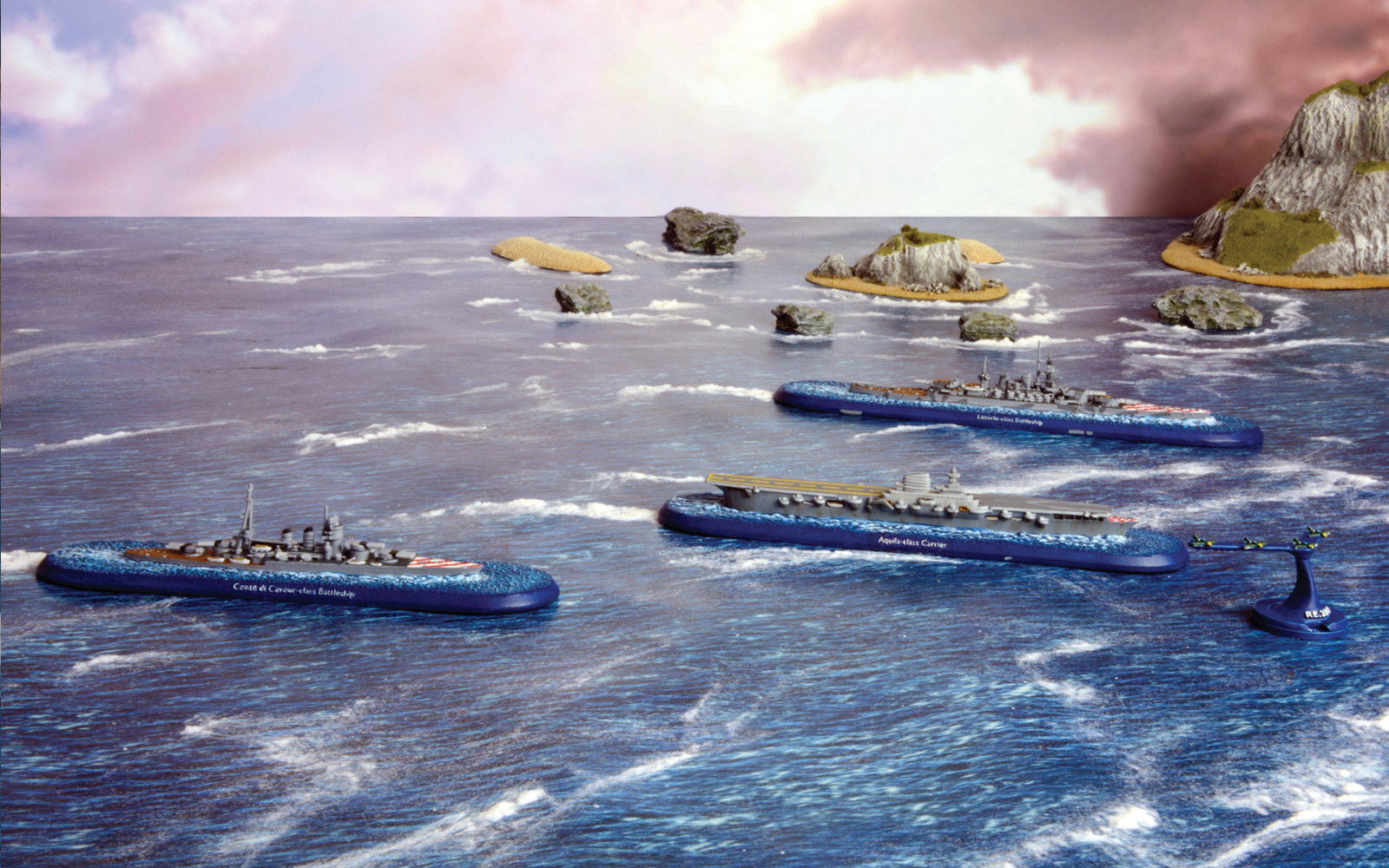
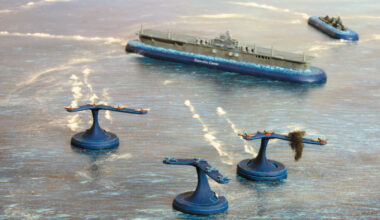
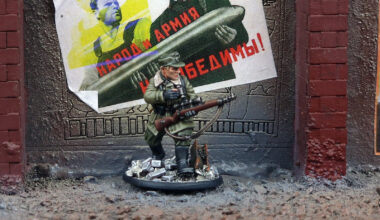
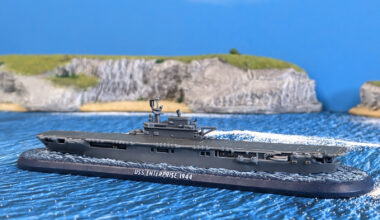
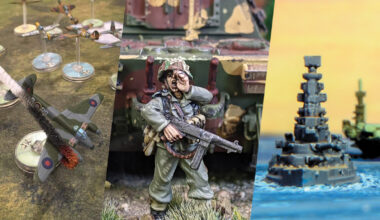
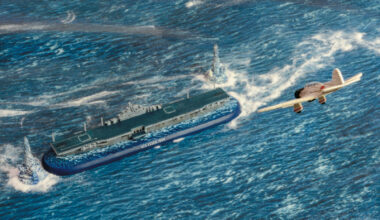
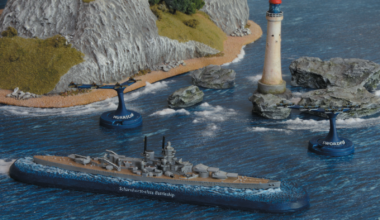
1 comment
Why do the Italians deserve two negative faction traits and nothing to make up for it? They were supposed to have “on paper” a modern highly effective fleet at the start of the war. Just asking for a tiny amount of love
Comments are closed.